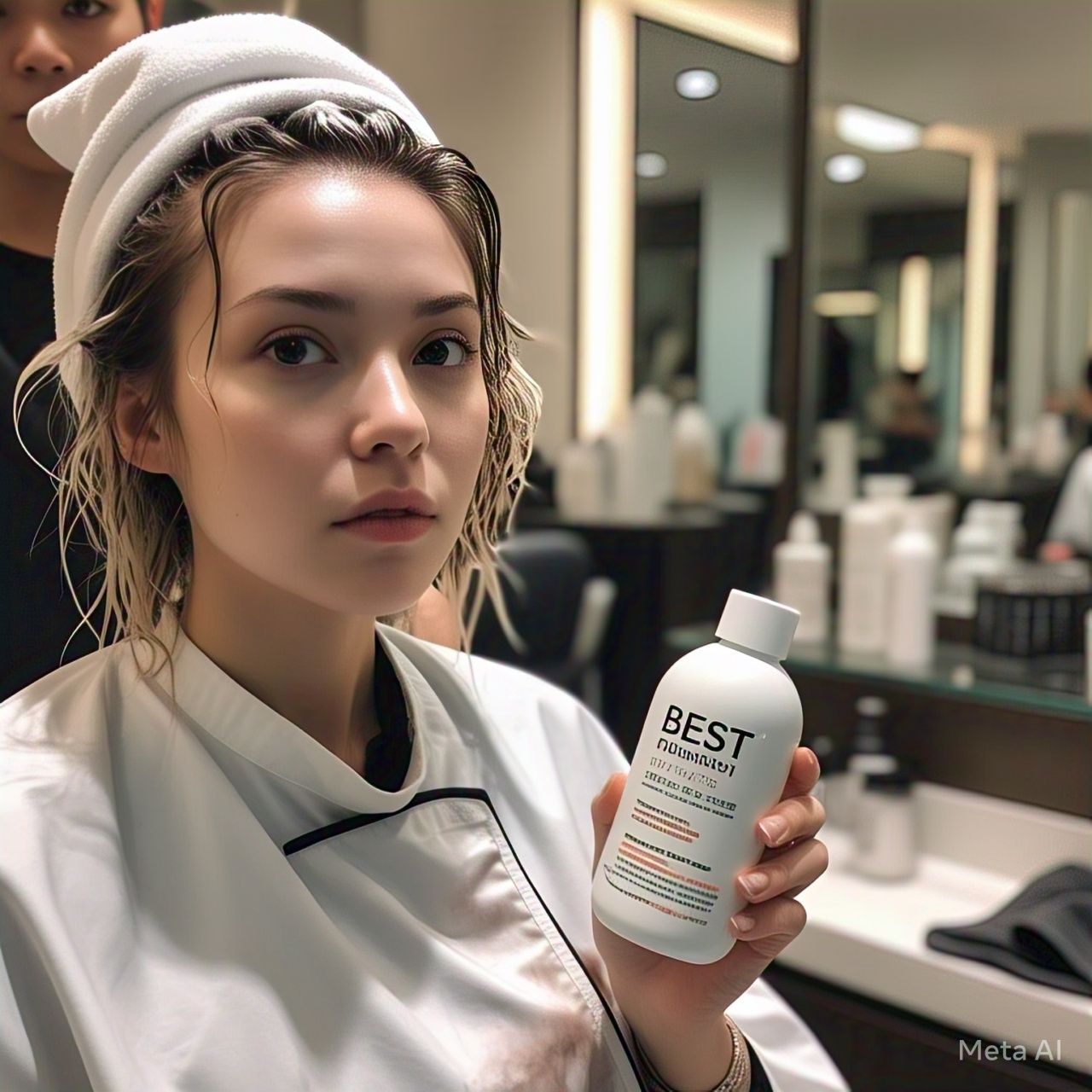Understanding Protein-Rich Conditioners and Their Benefits for Damaged Hair
Why Protein is Essential for Hair Health
Hair is primarily made up of a protein called keratin. When hair becomes weak, brittle, or damaged, it often lacks sufficient protein to maintain its strength and elasticity. Protein-rich conditioners help replenish this lost protein, restoring hair’s natural structure and preventing further breakage. These conditioners work by filling in gaps in the hair shaft, smoothing the cuticle, and adding resilience to strands that have been weakened by heat styling, chemical treatments, or environmental stressors.
How Protein-Rich Conditioners Work
Protein conditioners contain hydrolyzed proteins—smaller protein molecules that penetrate the hair shaft more effectively. Ingredients like keratin, collagen, wheat protein, and silk amino acids are commonly found in these products. Unlike regular conditioners that focus on moisture alone, protein treatments provide structural support, making hair less prone to splitting and snapping. However, balance is key; too much protein can make hair stiff and brittle, while too little may leave it weak and prone to damage.
Signs Your Hair Needs a Protein Treatment
Not all hair types require the same level of protein. Those with fine, chemically treated, or highly porous hair often benefit the most from protein conditioners. Signs that hair may need protein include excessive shedding, limpness, lack of elasticity, and breakage even with gentle handling. On the other hand, hair that feels overly dry or stiff after conditioning may already have too much protein and might need more moisture instead.
Choosing the Right Protein Conditioner for Your Hair Type
Different hair types require different protein formulations. For example, those with fine hair may benefit from lightweight proteins like silk amino acids, while thick, coarse hair might need stronger proteins like hydrolyzed wheat or keratin. It’s also important to consider other ingredients in the conditioner, such as natural oils and humectants, which can complement the protein treatment by adding moisture and shine.
Protein-rich conditioners play a crucial role in repairing and strengthening damaged hair. By understanding how these products work and identifying whether your hair needs protein, you can make an informed choice when selecting a conditioner. The next section will explore some of the best protein-rich conditioners available on the market and their unique benefits.
Top Protein-Rich Conditioners for Weak and Damaged Hair
High-Quality Protein Conditioners for Intensive Repair
When searching for the best protein conditioners, it’s important to look for products that combine hydrolyzed proteins with nourishing ingredients. Some of the top-rated options include Olaplex No. 5 Bond Maintenance Conditioner, which repairs broken bonds in the hair, and SheaMoisture Manuka Honey & Yogurt Hydrate + Repair Conditioner, which uses protein and natural moisturizers to restore hair health.
Drugstore vs. Luxury Protein Conditioners
While high-end brands often offer advanced formulations, many drugstore options are equally effective. The L’Oréal Paris Elvive Total Repair 5 Protein Recharge Conditioner is a budget-friendly choice that strengthens hair with protein and ceramides. On the luxury side, brands like Kerastase and Briogeo provide salon-quality treatments that deeply penetrate and reconstruct damaged strands.
Natural and Organic Protein Conditioners
For those who prefer clean beauty products, natural protein conditioners can be an excellent choice. The Mielle Organics Babassu Oil & Mint Deep Conditioner contains hydrolyzed rice protein and natural oils to strengthen hair without harsh chemicals. Another great option is the Giovanni 2Chic Ultra-Repair Avocado & Olive Oil Conditioner, which blends proteins with botanical extracts for gentle yet effective repair.
Protein Conditioners for Specific Hair Concerns
Different hair concerns require tailored solutions. For color-treated hair, a protein conditioner like Redken Extreme Strength Builder Plus helps prevent breakage while preserving vibrancy. Those with curly or coily hair may benefit from the Camille Rose Curl Love Moisture Milk, which includes rice protein to define curls while reducing frizz.
Selecting the right protein conditioner depends on hair type, damage level, and personal preferences. Whether opting for drugstore finds or high-end treatments, incorporating a protein-rich conditioner into a hair care routine can significantly improve hair strength and texture. The next section will discuss how to properly use these conditioners for optimal results.
How to Use Protein-Rich Conditioners for Maximum Effectiveness
Proper Application Techniques for Protein Treatments
Using a protein-rich conditioner correctly is essential for achieving the best results. Unlike regular conditioners, protein treatments require careful application to avoid overloading the hair with protein, which can lead to stiffness and breakage. The first step is to shampoo the hair with a gentle, sulfate-free cleanser to remove buildup and prepare the strands for deep conditioning. After rinsing, excess water should be gently squeezed out before applying the protein conditioner.
For even distribution, the conditioner should be applied in sections, focusing on the mid-lengths and ends—areas most prone to damage. The roots typically require less protein since natural oils protect them. Once applied, the hair can be covered with a shower cap or warm towel to enhance absorption. Leaving the conditioner on for the recommended time (usually 3-5 minutes for daily use or 15-30 minutes for deep treatments) ensures the proteins penetrate deeply without over-processing.
Frequency of Protein Treatments for Different Hair Types
Not all hair needs protein at the same frequency. Fine, chemically treated, or highly porous hair may benefit from weekly protein treatments, while thick, low-porosity hair might only need them every two to three weeks. Overuse of protein can cause hair to become brittle, so it’s important to monitor how the hair responds. Signs of protein overload include excessive stiffness, dryness, and increased breakage. If these symptoms appear, switching to a moisturizing conditioner for a few washes can restore balance.
For those who regularly use heat tools or undergo coloring treatments, incorporating a protein conditioner into their routine once a week can help counteract damage. On the other hand, those with naturally strong, healthy hair may only need a protein boost once a month as a preventative measure.
Combining Protein and Moisture for Optimal Hair Health
While protein strengthens the hair, moisture keeps it flexible and hydrated. A balanced routine alternates between protein-rich and moisturizing conditioners. For example, someone with dry, damaged hair might use a protein treatment once a week followed by a deep moisturizing mask to prevent brittleness. Products that contain both protein and humectants—like glycerin or hyaluronic acid—can also provide a dual benefit.
The “protein-moisture balance” is key to maintaining healthy hair. If hair feels too rigid after a protein treatment, a leave-in conditioner with natural oils (such as argan or coconut oil) can restore softness. Conversely, if hair feels too limp or mushy when wet, it may need more protein to regain structure.
Common Mistakes to Avoid When Using Protein Conditioners
One of the biggest mistakes is using protein treatments too frequently, leading to overload. Another error is applying protein conditioners to already protein-heavy hair without assessing its needs. Additionally, skipping a moisturizing follow-up after a protein treatment can leave hair feeling dry and rough.
It’s also important to choose the right protein strength. Lightweight proteins (like silk amino acids) are ideal for fine hair, while stronger proteins (such as hydrolyzed wheat or keratin) suit thick, coarse, or severely damaged hair. Always patch-test new products to avoid adverse reactions, especially if the hair is sensitive or chemically treated.
Using protein-rich conditioners effectively requires understanding application techniques, frequency, and the balance between protein and moisture. By tailoring the approach to individual hair needs, users can maximize the benefits of these treatments without risking protein overload. The final section will explore DIY protein treatments and long-term strategies for maintaining strong, healthy hair.
DIY Protein Treatments and Long-Term Hair Repair Strategies
Effective Homemade Protein Treatments for Damaged Hair
For those who prefer natural alternatives or want to supplement store-bought conditioners, DIY protein treatments can be highly effective. One popular option is an egg and yogurt mask, which combines the protein from eggs with the moisturizing lactic acid in yogurt. To make this treatment, one egg is whisked with half a cup of plain yogurt and applied to damp hair for 20 minutes before rinsing with cool water.
Another powerful DIY treatment is a gelatin protein mask, which mimics the effects of keratin treatments. Unflavored gelatin is mixed with hot water and a moisturizing agent like coconut milk or honey to prevent dryness. This mixture is applied to hair for 15-30 minutes before shampooing out. While these treatments can be beneficial, they should be used sparingly (once every 2-4 weeks) to avoid protein overload.
Natural Ingredients That Boost Hair Strength
In addition to protein, certain natural ingredients can enhance hair resilience when used in homemade treatments:
- Avocado contains healthy fats and vitamins that nourish hair while providing light protein.
- Bananas are rich in silica, which helps strengthen hair structure.
- Aloe vera soothes the scalp and contains amino acids that support keratin production.
Mixing these ingredients with a base like coconut oil or olive oil creates a nutrient-rich hair mask that repairs damage while maintaining moisture balance.
Long-Term Hair Care Habits for Sustained Strength
Using protein conditioners is just one part of maintaining healthy hair. Long-term repair requires a holistic approach:
- Reducing Heat and Chemical Damage – Limiting the use of flat irons, blow dryers, and harsh dyes prevents further weakening of hair strands. When heat styling is necessary, a thermal protectant spray should always be used.
- Gentle Hair Handling – Detangling with a wide-tooth comb while hair is wet (and coated with conditioner) minimizes breakage. Tight hairstyles that pull on roots should also be avoided.
- Protective Nighttime Routines – Sleeping on a silk or satin pillowcase reduces friction, while loose braids or a silk hair wrap prevent tangling and moisture loss overnight.
When to Seek Professional Help for Damaged Hair
While protein conditioners and at-home treatments can significantly improve hair health, severe damage may require professional intervention. If hair continues to break despite proper care, a trichologist or dermatologist can assess underlying issues like nutritional deficiencies or scalp conditions. Salon treatments like keratin infusions or bond-building services (e.g., Olaplex) offer deeper repair for extreme damage from bleaching or over-processing.
Final Conclusion: Maintaining Strong, Healthy Hair
Protein-rich conditioners are a vital tool for restoring weak, damaged hair, but they work best as part of a balanced routine. By combining the right products with gentle hair care practices and occasional DIY treatments, individuals can achieve lasting strength and shine. Monitoring the hair’s response to protein and adjusting usage accordingly ensures that strands remain resilient without becoming brittle. With consistent care, even severely damaged hair can regain its health over time.










